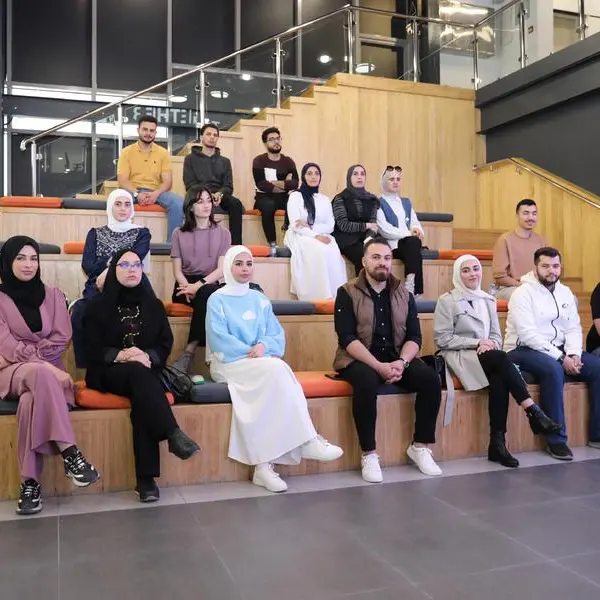PHOTO
Doha – Qatar Biomedical Research Institute (QBRI), part of Hamad Bin Khalifa University (HBKU), recently collaborated in a study initiated by researchers at the University of Warwick, United Kingdom, which sought to examine the impact of normal and high concentrations of glucose on blood vessels.
The findings of the initial study– led by Dr. Naila Rabbani from Warwick Medical School – have been published in Scientific Reports journal and could help to identify new ways to prevent organ damage from complications related to diabetes.
The research was conducted in collaboration with Professor Paul Thornalley, director of the Diabetes Research Center at QBRI, whose involvement in the study began when he was Professor of Systems Biology at the University of Warwick. The research team is now working to further develop this research, including its application to cell types found in the kidney, eye and nerves of arms and legs that become damaged in diabetes.
Professor Thornalley said: “It’s an honor to have contributed to this pioneering research, which is making vital contributions to the study of diabetes and our evolving understanding of the illness. The research team has also gained advantages from bringing QBRI on board our Diabetes Research Center is making great strides towards a deeper understanding of diabetes through our innovative research, which is also proving integral to the study.”
According to researchers from the University of Warwick and now QBRI, a mechanism in the cells that line blood vessels and which helps to process the sugar glucose, becomes uncontrolled in diabetes patients and could be linked to the formation of blood clots and inflammation.
Dr. Omar El-Agnaf, executive director, QBRI, said: “With the growing prevalence of diabetes in Qatar and the region, QBRI is committed to seeking out novel approaches to tackle this key healthcare challenge. Furthermore, we believe that great strides can be made in our endeavors through strategic collaborations, and the ongoing diabetes research with a leading research university such as the University of Warwick will help us uncover important insights with global relevance.”
Researchers examined the impact of normal and high concentrations of glucose on human endothelial cells, which form the lining of our blood vessels. By increasing the concentration of glucose in the culture medium, researchers modeled the effects on the human endothelial cells of hyperglycemia - a condition in which an individual’s blood glucose is abnormally high and is commonly caused by diabetes.
Dr Naila Rabbani, from Warwick Medical School, said: “Mechanisms of organ sensitivity to damage by high glucose concentrations in diabetes are still poorly understood and urgent improvement in treatment of diabetic complication is needed. Our study provides a step advance in understanding these mechanisms.
“Our research has identified a likely key step, increased hexokinase-2 (HK2), in the initiation of development of damage to the blood vessels in hyperglycemia linked to vascular complications of diabetes, such as kidney disease, damage to the retina in eyes and nerves in the arms and legs, and increased risk of heart disease - the major cause of premature death in diabetes. Importantly, we showed how a new type of treatment, Glo1 inducer, can correct this and deserves consideration in the search for improved treatments for diabetic complications.”
The initial study confirmed that glucose metabolism in endothelial cells is increased in high concentrations of glucose. They showed for the first time that this occurs because HK2 degrades more slowly in high glucose concentration and thereby metabolizes more glucose than normal. Increased glucose metabolism is the driver of metabolic dysfunction of endothelial cells in model hyperglycemia.
The Diabetes Research Center at QBRI promotes innovative research on both type 1 and type 2 diabetes and related metabolic disorders. The center’s primary goal is to gain fundamental knowledge and enhance the understanding of social, molecular, and genetic causes of the disease. These efforts will pave the way for the identification of therapeutic targets and the development of novel therapies and treatment modalities for this globally devastating disease.
About Hamad Bin Khalifa University
Innovating Today, Shaping Tomorrow
Hamad Bin Khalifa University (HBKU), a member of Qatar Foundation for Education, Science, and Community Development (QF), was founded in 2010 as a research-intensive university that acts as a catalyst for transformative change in Qatar and the region while having global impact. Located in Education City, HBKU is committed to building and cultivating human capacity through an enriching academic experience, innovative ecosystem, and unique partnerships. HBKU delivers multidisciplinary undergraduate and graduate programs through its colleges, and provides opportunities for research and scholarship through its institutes and centers. For more information about HBKU, visit www.hbku.edu.qa.
© Press Release 2019Disclaimer: The contents of this press release was provided from an external third party provider. This website is not responsible for, and does not control, such external content. This content is provided on an “as is” and “as available” basis and has not been edited in any way. Neither this website nor our affiliates guarantee the accuracy of or endorse the views or opinions expressed in this press release.
The press release is provided for informational purposes only. The content does not provide tax, legal or investment advice or opinion regarding the suitability, value or profitability of any particular security, portfolio or investment strategy. Neither this website nor our affiliates shall be liable for any errors or inaccuracies in the content, or for any actions taken by you in reliance thereon. You expressly agree that your use of the information within this article is at your sole risk.
To the fullest extent permitted by applicable law, this website, its parent company, its subsidiaries, its affiliates and the respective shareholders, directors, officers, employees, agents, advertisers, content providers and licensors will not be liable (jointly or severally) to you for any direct, indirect, consequential, special, incidental, punitive or exemplary damages, including without limitation, lost profits, lost savings and lost revenues, whether in negligence, tort, contract or any other theory of liability, even if the parties have been advised of the possibility or could have foreseen any such damages.











